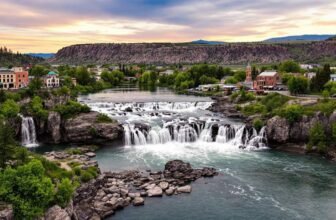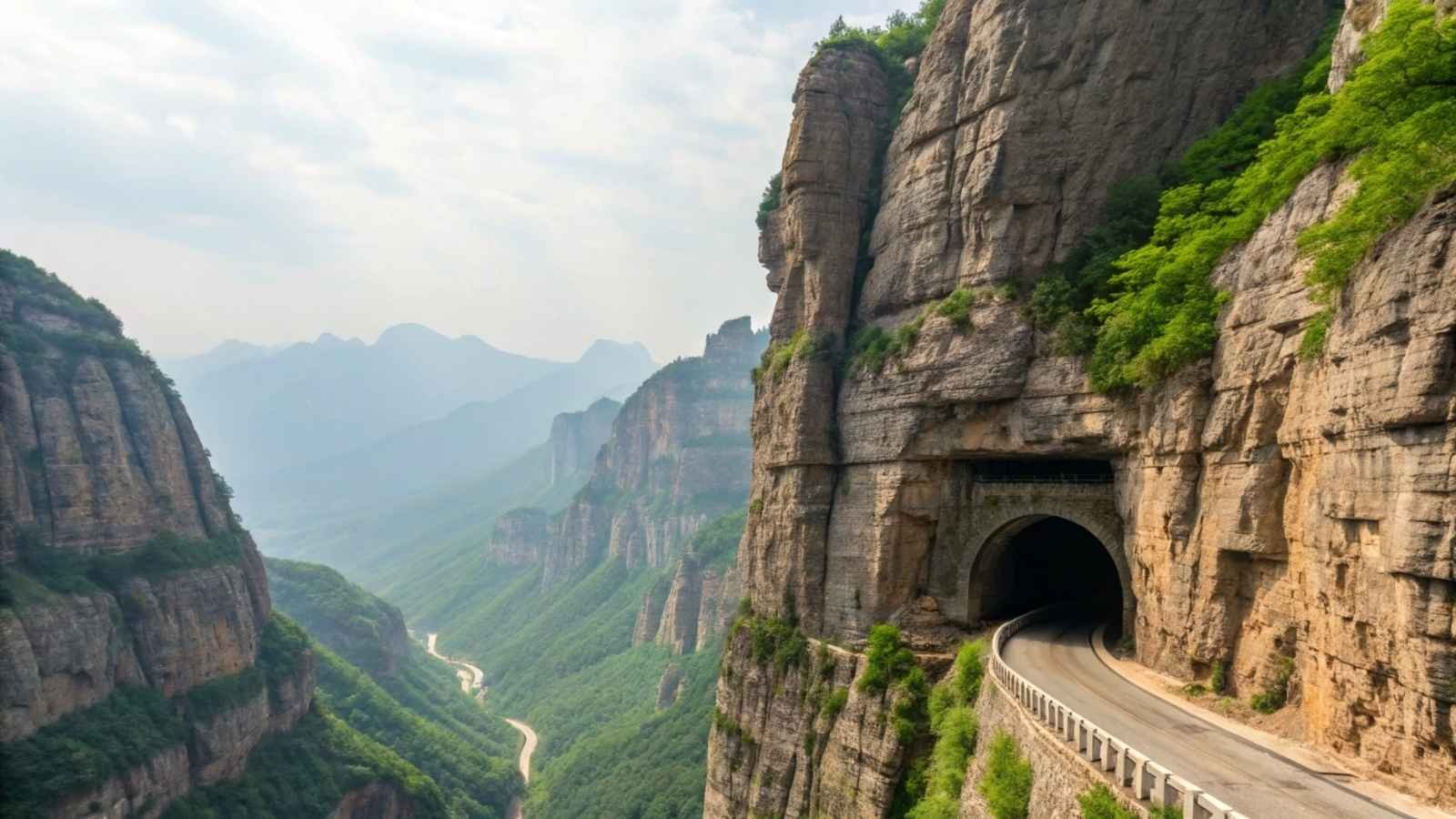
Some places make you question whether they belong to this world or the next. Towns wedged into cliffs, carved beneath the earth, or camouflaged so well you’d walk past without ever knowing—these are more than architectural oddities; they’re bold, breathtaking acts of human defiance.
They’ve endured gravity, isolation, erosion, even scorching sun, not by accident but by design. And yet, they’re still alive—still home.
Places that grip the edge of survival and beauty at the same time. Once you see them, it’s hard to believe they’re real—but even harder to forget.
1. Setenil de las Bodegas, Spain
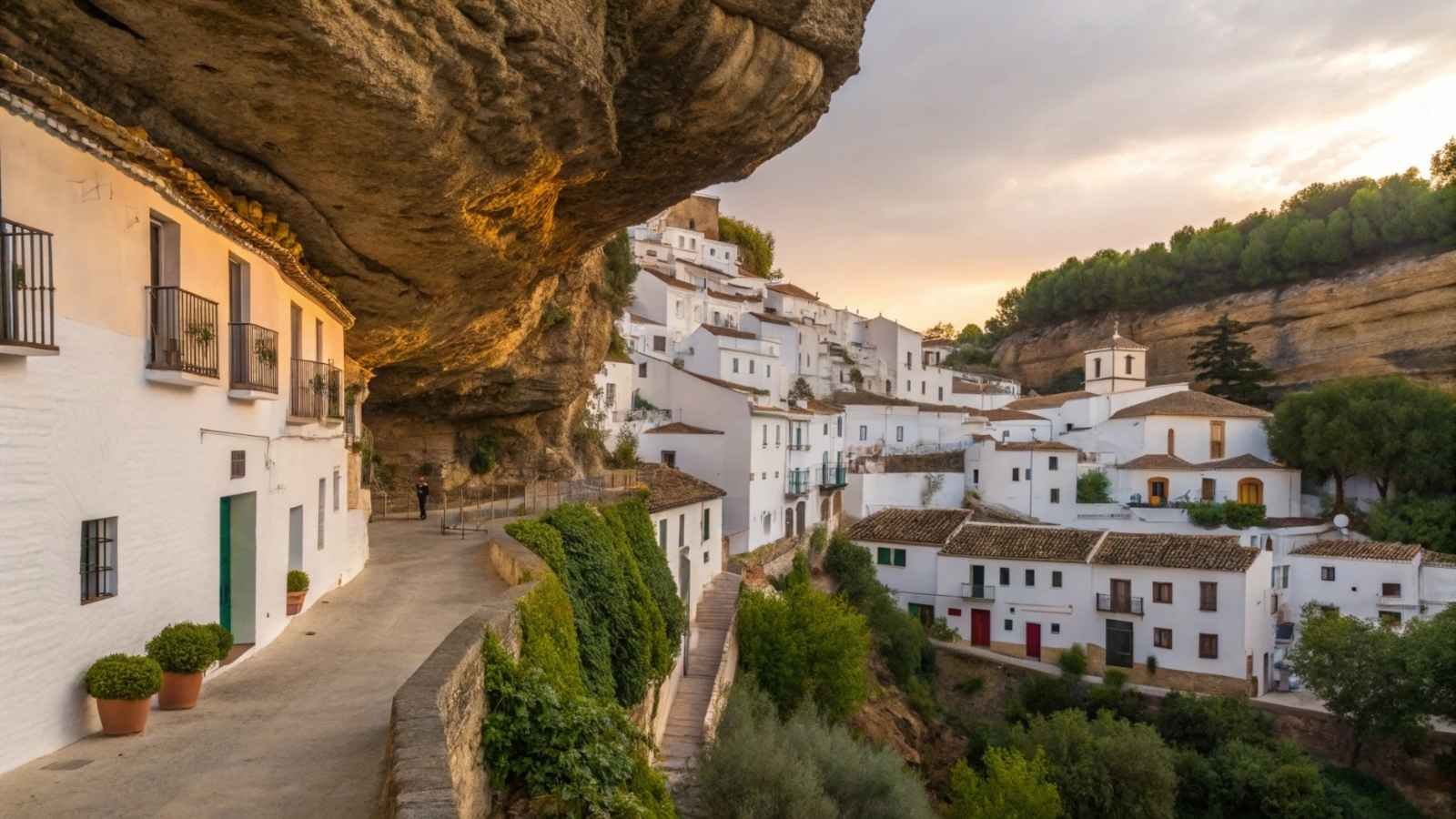
Tucked deep into a narrow river gorge in southern Spain, Setenil de las Bodegas isn’t just built into rock — it’s built under it. Giant basalt overhangs form natural ceilings and walls for many of the homes and businesses here. Locals have, quite literally, adapted their lives to the cliffs above them, turning a natural feature into part of their architecture. It’s not just a visual curiosity — it’s a living example of sustainable design born from necessity.
What makes Setenil so compelling isn’t just the rocks looming overhead, but the fact that this is a fully functioning town, not some ghostly tourist trap. There’s a bakery under a boulder, tapas bars shaded by stone ceilings, and whitewashed homes that disappear into the canyon. Walking its streets feels surreal — like the Earth itself has grown around the town instead of the other way around.
Setenil is also surprisingly photogenic. The contrast of white Andalusian walls against volcanic stone makes for some of the most unique urban scenery in Europe. It’s a small place, easily explored in a day, but it lingers in memory long after.
Quick Guide:
- Best Months to Visit: April to June, September to October (mild weather, fewer crowds)
- Getting There: The Closest major city is Málaga (approx. 1.5–2 hrs by car)
- Famous For: Cliff-embedded homes, tapas culture, rock-roofed streets
- Don’t Miss: Cuevas del Sol and Cuevas de la Sombra streets — half inside caves
- Pro Tip: Visit in late afternoon when sunlight casts dramatic shadows on the stone walls
2. Civita di Bagnoregio, Italy

Perched atop a fragile volcanic hilltop, Civita di Bagnoregio is often called “the dying town.” But don’t let the nickname fool you — this place is alive with haunting beauty and soul. The only way in is via a long pedestrian bridge suspended above a vast canyon, which adds a dreamlike sense of arrival. The town feels untouched by time, with medieval stone homes, winding alleys, and views that stretch across the Tiber Valley.
Erosion is slowly eating away at the cliffs Civita rests on, but that’s also what makes it so dramatically perched. It clings to its little plateau like a defiant survivor, especially stunning when low clouds roll through the valley below — it feels like walking above the sky. The population is tiny, mostly innkeepers and artisans, but their hospitality makes the place glow.
There’s a cinematic silence to Civita. No cars, no rush — just the hum of bees in flower pots and the echo of your footsteps on cobbled lanes. Even though it’s growing in popularity, it retains a kind of sacred hush, as if the stones themselves remember everything.
Quick Guide:
- Best Months to Visit: May to early July, late September
- Getting There: 2 hours from Rome by train + bus/taxi
- Famous For: Erosion-scarred cliffs, pedestrian-only access, ancient stonework
- Don’t Miss: The bridge walk at sunset and the view from Belvedere lookout
- Pro Tip: Stay overnight — when day-trippers leave, the magic multiplies
3. Matera, Italy
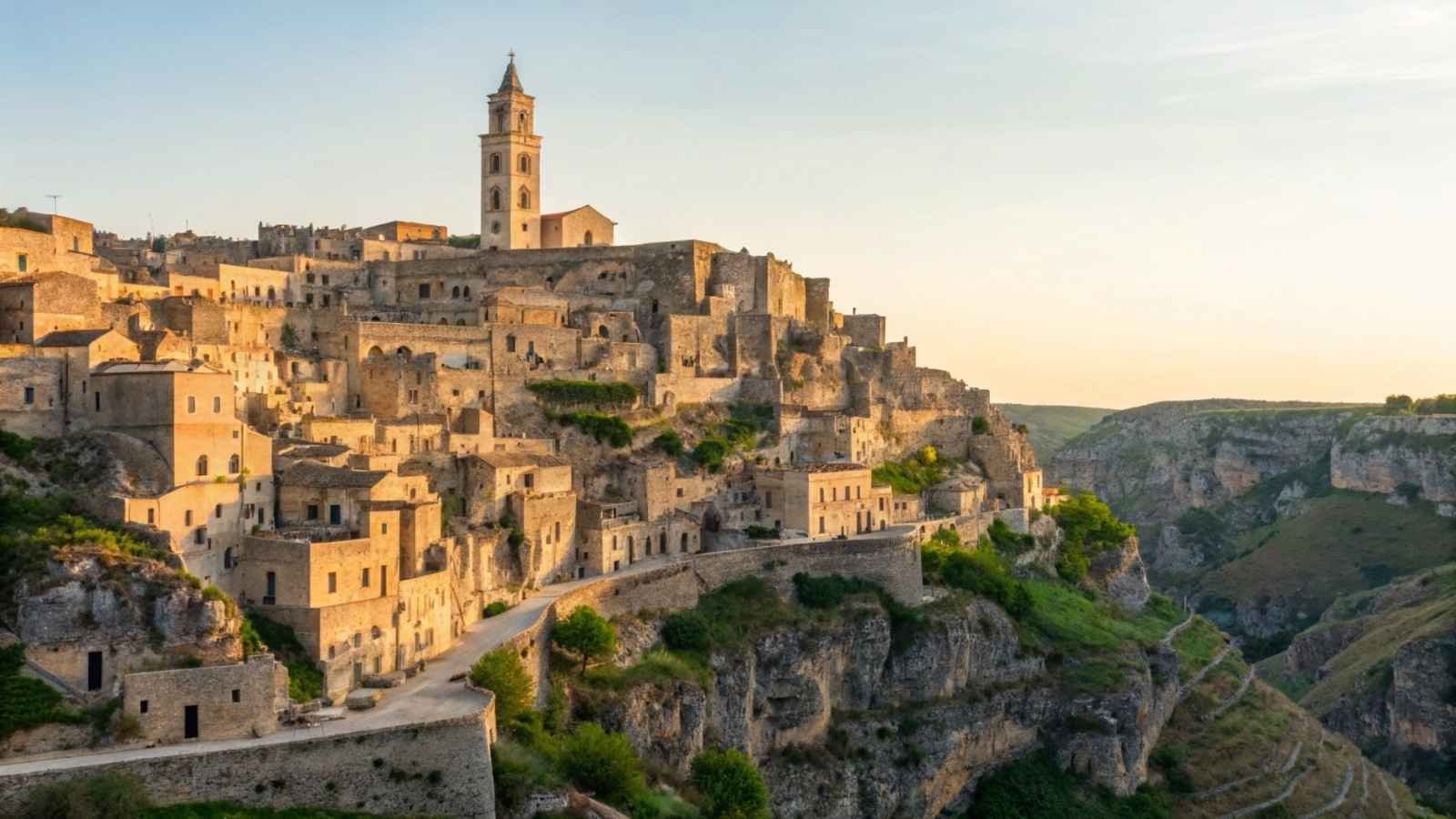
There are old cities, and then there’s Matera — a place where people have lived in caves for over 9,000 years. The town’s ancient district, known as the Sassi, is made up of stone dwellings carved directly into limestone cliffs. It’s one of the few places on Earth where you can sleep in a luxury hotel suite that was once a Neolithic home — and yes, it’s as wild as it sounds.
Walking through Matera is like stepping inside an archaeological puzzle that’s still alive. Stone staircases double as streets, churches are hollowed into cliffs, and golden hour here feels biblical. After years of being dismissed as a poverty-stricken backwater, Matera has undergone a renaissance, earning a spot as a UNESCO World Heritage Site and even being named a European Capital of Culture.
And yet, despite the acclaim, Matera doesn’t feel overrun. It’s deeply rooted in southern Italian rhythms: long lunches, quiet evenings, and local wines from nearby hills. You can spend hours just wandering — getting lost here is part of the experience.
Quick Guide:
- Best Months to Visit: March to June, September to November
- Getting There: 1 hr drive from Bari (nearest airport)
- Famous For: Cave dwellings (Sassi), rock churches, ancient history
- Don’t Miss: Casa Grotta di Vico Solitario (furnished cave home), Crypt of the Original Sin
- Pro Tip: Book at least one night in a cave hotel — it’s unlike anywhere else
4. Rocamadour, France

Stacked dramatically against a limestone cliff in southwest France, Rocamadour looks like it was built by fairytale architects. The town cascades down the rock face in layers — a vertical village topped by a castle, held together by medieval gravity and faith. For centuries, pilgrims have climbed the 216 steps to the shrine of the Black Madonna, hoping for miracles.
But even if you’re not on a spiritual journey, Rocamadour is jaw-dropping. The views over the Alzou Valley, the silent chapel interiors, and the cliffside facades are pure poetry. You don’t just visit Rocamadour — you look up at it, gape at it, then wander slowly through its stone paths with your neck craned and your camera full.
Despite its drama, it’s a serene place. Cafés perch above gorges, monasteries hang on ridges, and you’ll find yourself whispering in awe without realizing it.
Quick Guide:
- Best Months to Visit: April to June, September
- Getting There: 2.5 hrs drive from Toulouse
- Famous For: Black Madonna shrine, vertical architecture, pilgrimage site
- Don’t miss: The Holy Staircase, Chateau ramparts, and the lift to the cliff
- Pro Tip: Go early morning or late afternoon for fewer tourists and softer light
5. Positano, Italy
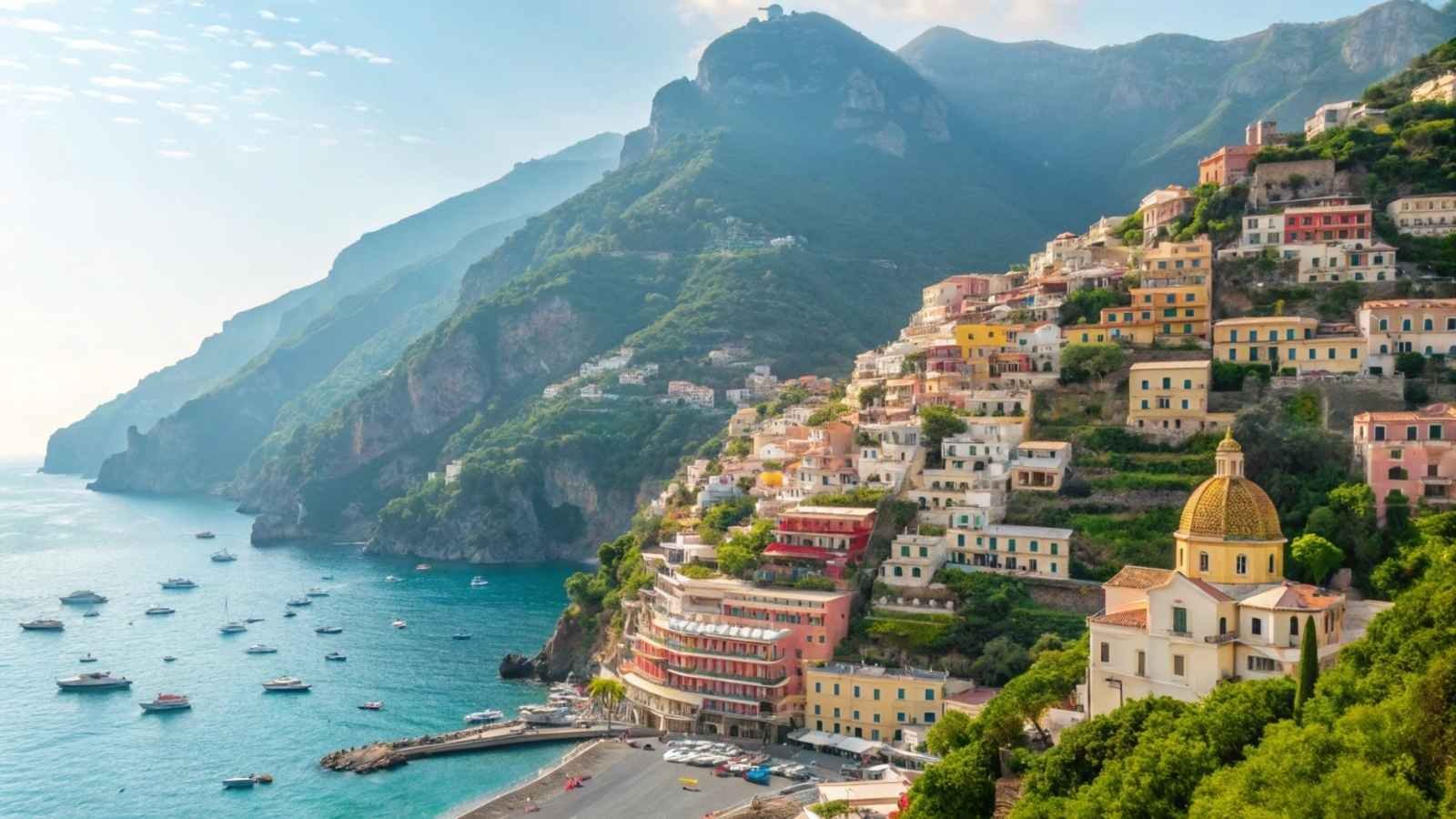
Of all the cliff towns, Positano may be the most recognizable — and for good reason. Draped across the cliffs of Italy’s Amalfi Coast, this pastel-painted village seems to spill into the Mediterranean, like a watercolor bleeding off the page. It’s elegant, cinematic, and yes — undeniably photogenic. But it’s more than just a pretty face.
Every inch of Positano is a vertical adventure. You don’t walk the town — you climb it, through steep alleys lined with boutiques, perfumeries, and open-air cafes. There’s a coastal energy here that’s hard to define: both laid-back and luxurious. You can swim in the sea, sip limoncello under bougainvillea, and shop for handmade sandals on the same afternoon.
But don’t let the postcard-perfect look fool you — this is a town with serious roots, once a humble fishing village and now an icon of Italian charm. And while it’s no secret anymore, its cliffside angles and breathtaking sunrises still feel fresh, no matter how many photos you’ve seen.
Quick Guide:
- Best Months to Visit: May, June, and September (avoid peak July–August crowds)
- Getting There: Via Naples or Salerno, then ferry or bus
- Famous For: Terraced cliffs, beaches, Mediterranean charm
- Don’t Miss: Spiaggia Grande, Path of the Gods hike, local seafood pasta
- Pro Tip: Wear good walking shoes — the steps are no joke, but worth every calorie burned
6. Guoliang, China

If ever there was a town that shouldn’t exist by logic, it’s Guoliang — a tiny village perched on the sheer cliffs of the Taihang Mountains in China. For decades, it was cut off from the outside world, reachable only by a treacherous footpath carved into the mountainside. Tired of being forgotten, a handful of villagers decided to carve a road through solid rock with hand tools.
Yes, you read that right. The Guoliang Tunnel Road is a hand-hewn miracle, blasted and chiseled by locals with zero engineering background. It clings to the mountainside like a thread of defiance, complete with open “windows” that look straight down into the canyon. Getting there is part of the adventure — and trust me, your pulse will remind you of that.
But Guoliang itself is the reward. Stone-built homes, mist-wrapped valleys, and a serenity that feels earned. It’s not touristy, it’s not polished, but it’s authentic — and you’ll never forget the view, or how you got there.
Quick Guide:
- Best Months to Visit: April to October (pleasant for hiking and views)
- Getting There: Nearest city is Zhengzhou; allow at least 4–5 hours by car
- Famous For: Hand-carved cliff tunnel, extreme isolation, Taihang Mountain scenery
- Don’t Miss: Walking the Guoliang Tunnel, sunrise over Red Cliffs
- Pro Tip: Not for those afraid of heights, but a paradise for bold travelers
7. Ortahisar, Turkey

In the heart of Cappadocia’s lunar landscape, Ortahisar stands like a jagged crown of volcanic tuff — and at first glance, it’s easy to miss the fact that this towering rock is full of homes. For centuries, locals have carved their way into the soft stone, creating cave dwellings, storage rooms, and even churches inside the cliffs. Unlike its flashier neighbors, Ortahisar remains low-key — a place where real life still flows among the surreal.
The centerpiece is the Ortahisar Castle, an enormous natural rock formation riddled with tunnels and chambers. Climb to the top and you’re treated to panoramic views over valleys studded with fairy chimneys, vineyards, and winding trails. You’ll likely share the moment with no one but the breeze and a few birds.
What sets Ortahisar apart is its balance — part traditional village, part otherworldly maze. You’ll find farmers driving donkey carts, bakers pulling flatbreads from clay ovens, and the occasional cave hotel with panoramic terraces. It’s less polished than Göreme or Uçhisar, and all the more charming for it.
Quick Guide:
- Best Months to Visit: April–June and September–October (ideal for exploring)
- Getting There: 1 hr drive from Kayseri Airport
- Famous For: Rock castle, cave homes, quiet authenticity
- Don’t Miss: Climbing Ortahisar Castle, hiking to Balkan Valley
- Pro Tip: Wake up early — the morning light on the cliffs is quietly spectacular
8. Coober Pedy, Australia

And now for something completely different: a mostly invisible town. Welcome to Coober Pedy, Australia’s infamous underground outpost where more than half the residents live in dugouts — homes hollowed directly into sandstone beneath the desert. Why? Because the surface temperatures regularly scorch past 45°C (113°F), and underground is the only escape.
Coober Pedy started as an opal mining settlement, and it still wears its rough edges with pride. Wander around and you’ll see bizarre signs like “Underground Church” or “This Home is 100% Below Ground” — and they’re not exaggerating. Inside, the temperature stays comfortably cool year-round, and the interiors are surprisingly cozy. Think rustic-meets-space-station vibes.
Despite the desert desolation, Coober Pedy has a strange allure. There’s a DIY spirit here that feels totally Martian, and it’s no coincidence the area has been used as a filming location for post-apocalyptic movies. It’s gritty, extreme, and unforgettable — a town that rewrites the rules of what it means to settle down.
Quick Guide:
- Best Months to Visit: April to October (cooler weather; avoid peak summer)
- Getting There: 9-hour drive from Adelaide or short flight
- Famous For: Underground homes, opal mining, sci-fi film sets
- Don’t Miss: Underground Serbian Church, opal mine tours, Moon Plain
- Pro Tip: Stay underground for at least one night — it’s more comfortable than you’d think





